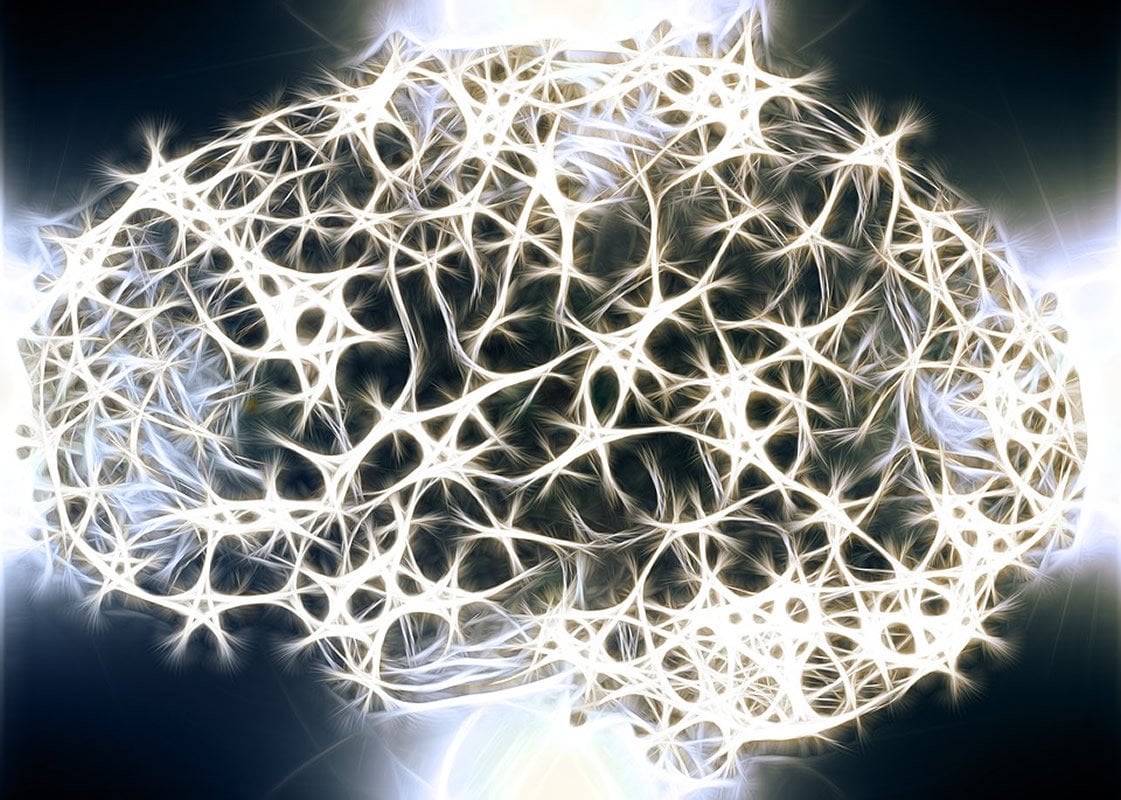Summary: Noradrenaline is essential for astrocytes to respond to local stimulation.
Source: VIB Flanders
A collaboration between the laboratories of Vincent Bonin (NERF, empowered by VIB, imec and KU Leuven) and Matthew Holt (VIB-KU Leuven Center for Brain & Disease Research) reveals that noradrenaline plays a key role in how astrocytes – star-shaped cells in the brain closely associated with neurons – track distinct information during behavior. The researchers found that astrocytes can integrate information on arousal state and sensory experience.
The results are published in Current Biology.
Noradrenaline in the brain
When we are aroused the hormone noradrenaline is secreted, which helps us to better remember emotional situations compared to neutral ones. In earlier studies, noradrenaline was shown to directly influence synapses – information exchange points between neurons – in brain regions responsible for processing emotions. However, noradrenaline is released across the entire brain and stimulates a class of non-neuronal cells, astrocytes, which listen and respond to locally active neurons. A question remained: do astrocytes integrate this brain-wide signal with the specific activity of local neuronal networks?
Watching astrocytes
To answer this question, Drs. Michal Slezak (VIB-KU Leuven Center for Brain & Disease Research) and Steffen Kandler (NERF) used a special microscope to monitor the activity of astrocytes in mice. When mice were presented with visual stimuli, in some cases astrocytes faithfully responded. “It was so exciting! We know that if you check neuronal activity in the brain region receiving inputs from the retina that it exactly mirrors the movement of the visual stimulus. But this is the first time we saw this pattern when watching non-neuronal cells”, says Dr. Bonin co-lead author of the study.
However, in some cases visual stimuli did not elicit any response from the astrocytes. The mystery was solved when each event of visual stimulation was analyzed independently – it turned out that astrocytes were active only when the mouse was in motion, and they were silent when the mouse was stationary. Slezak and Kandler further tested whether noradrenaline is the molecule responsible for this effect. They used a compound which depletes the brain of noradrenaline and found that astrocytic responses were largely decreased, even when mice were in motion. In other words, noradrenaline is necessary for astrocytes to respond to local stimulation: astrocytes are effectively integrating sensory and behavioral information.
Big impact of little-known cells
“This novel finding opens many additional questions. Previous studies on the action of noradrenaline on brain function focused entirely on neurons. Our data highlights that astrocytes can play a much more substantial role than previously thought”, says Dr. Slezak.

“The idea that astrocytes respond to neuronal activity has been floating around for some time, but evidence for such a system has been lacking in vivo. Our work fills this gap. I just don’t think anyone really expected that the response would be so heavily influenced by the behavioral state of the animal,” adds Dr. Matthew Holt, joint lead author on the study. “We now have to work out how this operates at the molecular level and investigate the function consequences for the brain.”
Funding: Matthew Holt: European Research Council (Starting Grant 281961), Fonds voor Wetenschappelijk Onderzoek Vlaanderen (FWO) (Grants 1523014N and 1527315N) and VIB Institutional Funding
Vincent Bonin: FWO (Grant G0D0516N), KU Leuven Research Council (Grant C14/16/048) and NERF Institutional Funding
Michal Slezak: Marie Curie Intra-European Fellowship (331018)
Source:
VIB Flanders
Media Contacts:
Sooike Stoops – VIB Flanders
Image Source:
The image is in the public domain.
Original Research: Open access
“Distinct Mechanisms for Visual and Motor-Related Astrocyte Responses in Mouse Visual Cortex”. Vincent Bonin et al.
Current Biology doi:10.1016/j.cub.2019.07.078
Abstract
Distinct Mechanisms for Visual and Motor-Related Astrocyte Responses in Mouse Visual Cortex
Highlights
• Astrocytes of moving mice display robust retinotopic responses to visual stimuli
• Sensory responses are distinguishable from responses to locomotion
• Vision-driven responses are correlated to arousal
• Vision- and arousal-driven responses are differentially regulated by noradrenaline
Summary
Astrocytes are a major cell type in the mammalian nervous system, are in close proximity to neurons, and show rich Ca2+ activity thought to mediate cellular outputs. Astrocytes show activity linked to sensory [1, 2] and motor [3, 4] events, reflecting local neural activity and brain-wide neuromodulatory inputs. Sensory responses are highly variable [5, 6, 7, 8, 9, 10], which may reflect interactions between distinct input types [6, 7, 9]. However, the diversity of inputs generating astrocyte activity, particularly during sensory stimulation and behavior, is not fully understood [11, 12]. Using a combination of Ca2+ imaging, a treadmill assay, and visual stimulation, we examined the properties of astrocyte activity in mouse visual cortex associated with motor or sensory events. Consistent with previous work, motor activity activated astrocytes across the cortex with little specificity, reflecting a diffuse neuromodulatory mechanism. In contrast, moving visual stimuli generated specific activity patterns that reflected the stimulus’ trajectory within the visual field, precisely as one would predict if astrocytes reported local neural activity. Visual responses depended strongly on behavioral state, with astrocytes showing high amplitude Ca2+ transients during locomotion and little activity during stillness. Furthermore, the amplitudes of visual responses were highly correlated with pupil size, suggesting a role of arousal. Interestingly, while depletion of cortical noradrenaline abolished locomotor responses, visual responses were only reduced in amplitude and their spatiotemporal organization remained intact, suggesting two distinct types of inputs underlie visual responses. We conclude that cortical astrocytes integrate local sensory information and behavioral state, suggesting a role in information processing.







